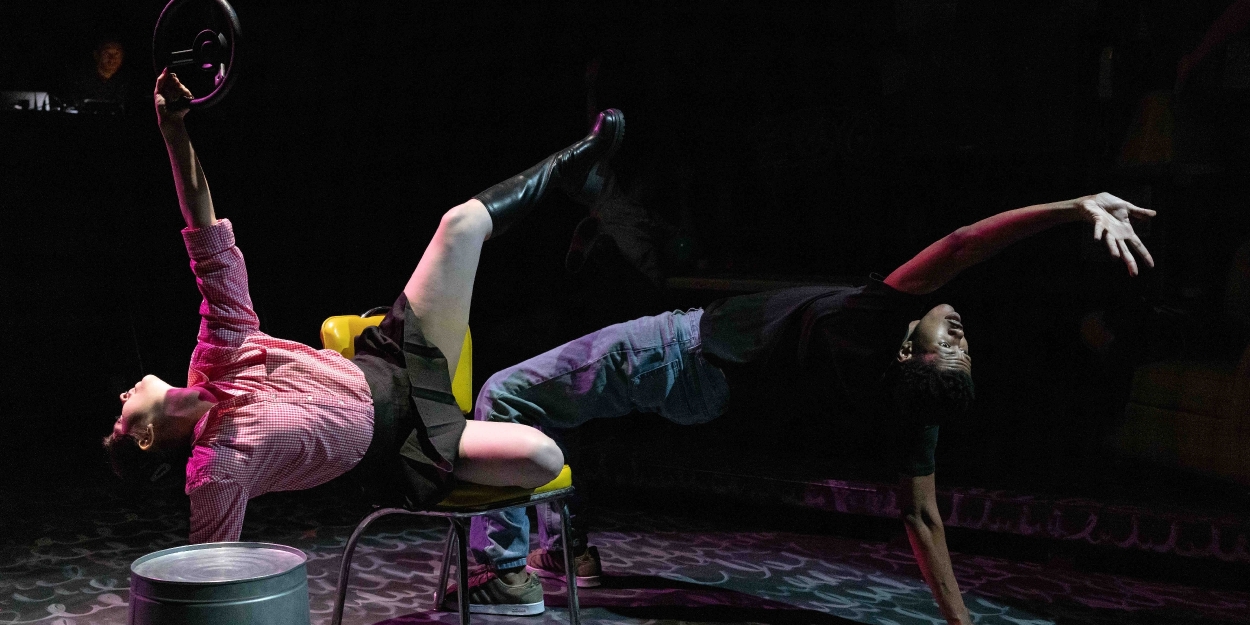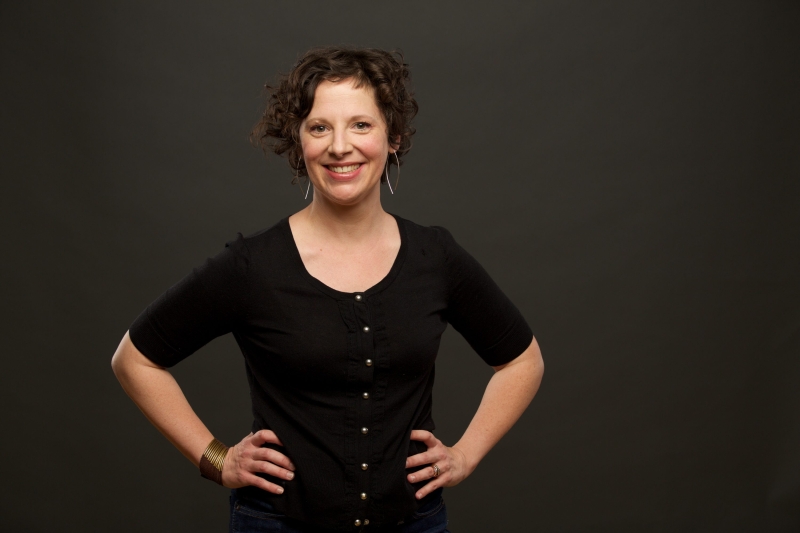Interview: Jessica Wallenfels, Artistic Director of Many Hats Collaboration, on Wrapping Up the 5 in 5 Initiative, Looking to the Future
AD of a local independent theatre company reflects on the last five years.

At the end of 2023, Many Hats Collaboration, which creates theatre performances that reimagine music and movement onstage, wrapped up its 5 in 5 Initiative. Launched in 2019, 5 in 5 was an ambitious plan to create five new works in five years that lifted up the voices of underrepresented groups through collaborative theatre practice. Now, five years – and a pandemic – later, the company has wrapped up the initiative, creating not just five, but seven, new works, spanning mainstage, video, workshop, and educational projects.
Here’s my interview with Jessica Wallenfels, Many Hats’ artistic director, on what it feels like to wrap up the 5 in 5 Initiative and what’s in store for the next five years or so.

You launched the 5 in 5 Initiative in 2019, and then the world changed. How did your plans change in response to the new reality?
JW: First, they came to a dead stop. As we began to slowly accept the reality of the situation, I began to get creative with the flexibility of how we would interpret our own mandates. So, for example, "devised" was one of the five genres we wanted to work with, but after the murder of George Floyd I thought repeatedly of Charles' Grant's solo piece, Matter, that he performed when he finished his apprenticeship with Portland Playhouse in 2017.
Finding a way for more people to see that was the most relevant thing I could think of to do at the moment, but I realized that it also is a devised piece - devised by Charles. So I realized I could bend my own rules to produce a piece devised by someone else if that was what was the most important work we could produce. This later led to other adaptations like working on video and creating community projects such as The Gathering Place [a movement-based class that ran for two sessions], just to keep working with what we were given and the world circumstances at the moment.
You specifically set out to engage multiple perspectives, amplify the voices of underrepresented groups, and increase representation of diverse populations and model inclusivity. How do you feel you did in achieving these goals?
JW: I think we did well with hewing close to our guiding principles, but more importantly worked on improving on them as we went. Even our initial goals had to be re-examined and interrogated in the wake of the civil rights crisis of 2020 and the release of the We See You White American Theater manifesto.
Beth Thompson [Many Hats’ managing director], myself, and the board have been engaged in self-reflection and study on topics of equity and inclusion throughout the 5 and 5. In 2020 we set a goal that the majority of our performers in The November Project would be BIPOC, and in the last two years, 69% of the artists we worked with identify as BIPOC, LGBTQIA+, and/or disabled. So, putting some hard numbers to the good intentions we started with has been a win.
Of the seven works you produced, three were "projects" (The November Project, Poker Project, Ritual Project). Is there something about the idea of “project” that particularly resonated with you during this time?
JW: The underlying ethos for these projects was also affected by the pandemic. Starting new works in an atmosphere of total uncertainty doesn't allow you to assume they will follow a traditional path to production - when they were conceived, it was hard to predict when we would even be allowed back in theaters again. The good thing about all this "projecting" is that we approached them all as experiments, standing by to see what would happen when we put ideas and people in a room together, rather than expecting them to produce results in the form of a finished play.
In particular, The November Project was a community art project experiment, as we asked 23 female and nonbinary artiststo create dances in their bathrooms about how they were feeling in the three weeks following the 2020 election. We truly had no idea what we'd get or what it would reveal about that moment in time. “The Ritual Project” was the Working Title of Eric Nordin's musical We Do What We Can [which Many Hats workshopped in 2021 and 2023], because we started with devising on his treatment - no script, no songs. Similarly, Poker Project began with a very loose premise – playwright Anya Pearson is letting the characters drive where the piece will eventually want to go.
Reflecting on the last five years, what is the top thing you've learned about art / theatre / the act of creation / etc.?
JW: I think what I've learned, again, is that collaboration first changes me. Sure, I hope our shows affect audiences on a profound level, maybe even change how they see the world. But before that can happen, I get changed by my collaborators - and I'm kind of addicted to trying to perpetuate my own growth by finding people who will force me to expand. Working with Charles Grant as co-director on Great Wide Open is a great example of this - he had so many wonderful staging ideas that drew on dance that I wouldn't have tried. I was humbled to stand back and watch at times.
Looking forward, how will you use what you've learned from the 5 in 5 to inform your future work?
JW: Keep bringing people into your house who make it a great place to be!
You recently received a $20,000 community grant from the Oregon Community Foundation for a collaboration with Deaf playwright Monique Holt. Congratulations! Tell me more about the work the grant will help fund.
JW: Thank you! It's wonderful to have a monetary reinforcement of the ideas that we've been percolating this year.
Monique "MoMo" Holt is writing a play titled Why and How Are Not in the Picture, which features the characters WHAT, WHO, WHEN, WHERE and WHICH. These characters are running around inside a deaf person's brain, frantically trying to make sense of the world with an incomplete picture.
It is an absurdist musical performed entirely in ASL with open captions. Our five actors are both d/Deaf and hearing, all proficient signers, and they are fantastic. The first workshop took place in November and featured up to 11 collaborators, seven of them d/Deaf, with a team of two interpreters translating the entire process. In our second workshop, we will add design elements, with the goal of increasing access to music and sound for d/Deaf audiences through the use of light.
You’re also just about to announce a new works festival called The Hatchery. Can you give us a sneak peek?
JW: The Hatchery is a new works development program designed to support performance that encompasses music and movement as an integral part of storytelling and audience experience. Many new plays development programs focus only on text in a "table work"-like setting, culminating in a final reading behind music stands. But if your play demands music or movement as part of its theatrical language, simply focusing on text won't serve the totality of the piece and its growth.
The Hatchery is a week of play development rehearsal culminating in a public performance. This year, two projects will be workshopped. One of them is Monique Holt’s piece; the other will be sourced from the community. The Hatchery is funded to pay all the artists involved and is free for audiences. It's been a dream of my life to be able to provide this kind of space.
Sounds fabulous! To wrap up, what will the next five years look like for Many Hats?
JW: We hope to grow The Hatchery from two to four projects in the next three to four years, and become part of a vibrant cluster of new works platforms in the PNW. Maybe The Hatchery can help become a driver for new works for the contemporary theater canon, similar to the way Fertile Ground serves as an incentive for local artists and Risk/Reward is a hub for contemporary performance. With PETE Presents and Coho Productions' new residency model, Portland is showing our love for artists by creating spaces where they can work.
In addition to The Hatchery, I hope to produce We Do What We Can (formerly known as "The Ritual Project"), and I'm still dreaming about a collab with circus artists to create a rock circus musical. I would love to co-pro with a larger theater on The Poker Project and hope to find multiple producing partners for Why and How Are Not in the Picture.
Thanks, Jessica. As a huge fan of Many Hats, I look forward to all of it.
Check out the Many Hats Collaboration website to learn more about their projects, sign up for their newsletter, and donate to help fund their work.
Photo credits: Feature photo by Shawnte Sims, featuring Leiana Rousseau Petlewski and Anthony Michael Shepard; Jessica Wallenfels by Craig Mitcheldyer
Play Broadway Games
Videos





%20(1024%20×%20512%20px).png)